Playful interaction
The co-operative pen
What if three people, each with a different physical device, operated one virtual pen?
A project with
Garba Habila, Hafsa Mire, Stephanie Neumann
What we did
concept development, interaction design, physical
prototyping, electronics,
digital prototyping, programming, playtesting
My role
interaction designer, electronics prototyper, digital
prototyper, programmer, user researcher
Background
This work was done for a course on playful interaction, where each student had to pitch a concept for a game or a toy. Out of these, seven were chosen for developing into playable prototypes, and teams formed around each. Among the seven was my idea for a collaborative drawing tool.
The idea
I was curious to see what would happen if three people had to negotiate drawing with one virtual pen. Each person would have a different physical device, and each would control a specific property of the pen. Using sensors, the devices were thought to pick up changes in position, light intensity, and air flow, respectively.
The whole thing might take place in a public or semi-public setting, with the visual output being displayed as a projection on the wall.
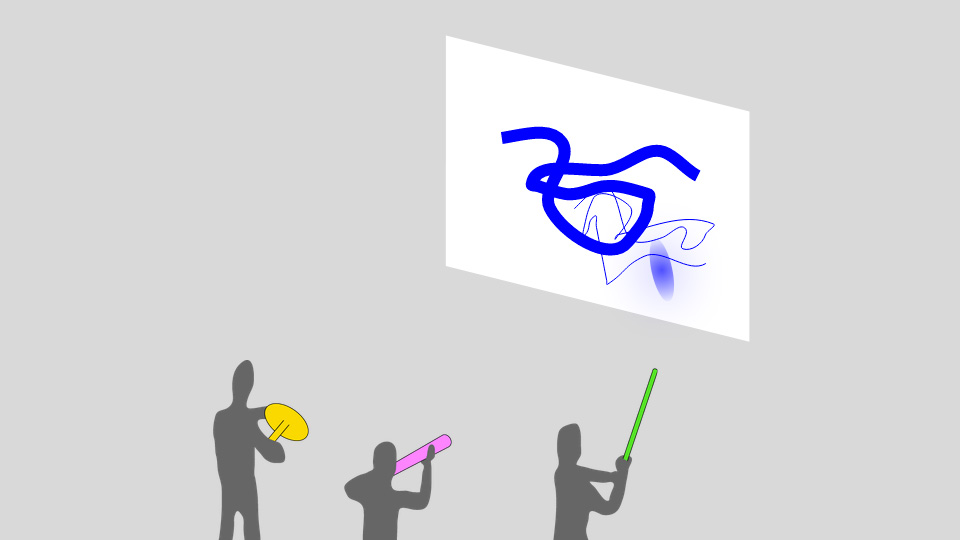
Would it lead to collaboration, coexistence or conflict? Could less conventional tools bring about unusual drawings?
Process
Within our team of four, we brainstormed how the initial idea might evolve, by focusing on different aspects: drawing, social interplay, surprise, tangible and embodied interaction.
There was a new round of pitches – one suggested drawing with facial expressions; another involved workout equipment, envisioning drawing as a physical exercise.
In the end, we decided to run with the idea which had stayed closest to the original, the main difference being that the tool formerly sensing light intensity was now to be watching out for the user shaking it instead.
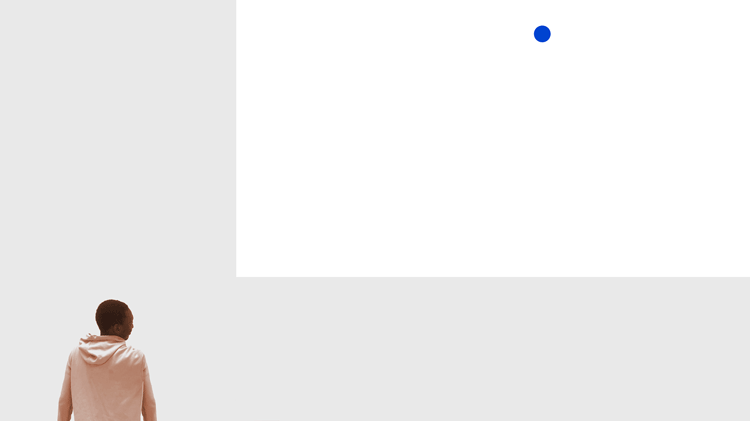
The following weeks were spent tinkering with electronics, code, sound, and tangible materials; bodystorming; testing and evaluating. Throughout, we were concerned with how a sense of play could be affected by the coupling between action and response, and how it related to the social interaction between the users.
One of our first prototypes enabled changing the thickness of the drawn line by turning the knob of a potentiometer. It was simple, but oddly satisfying, and we happily let it replace the tool that would require the user to blow into it. Air flow as input, while potentially intriguing from an interaction point of view, proved tricky to get right.
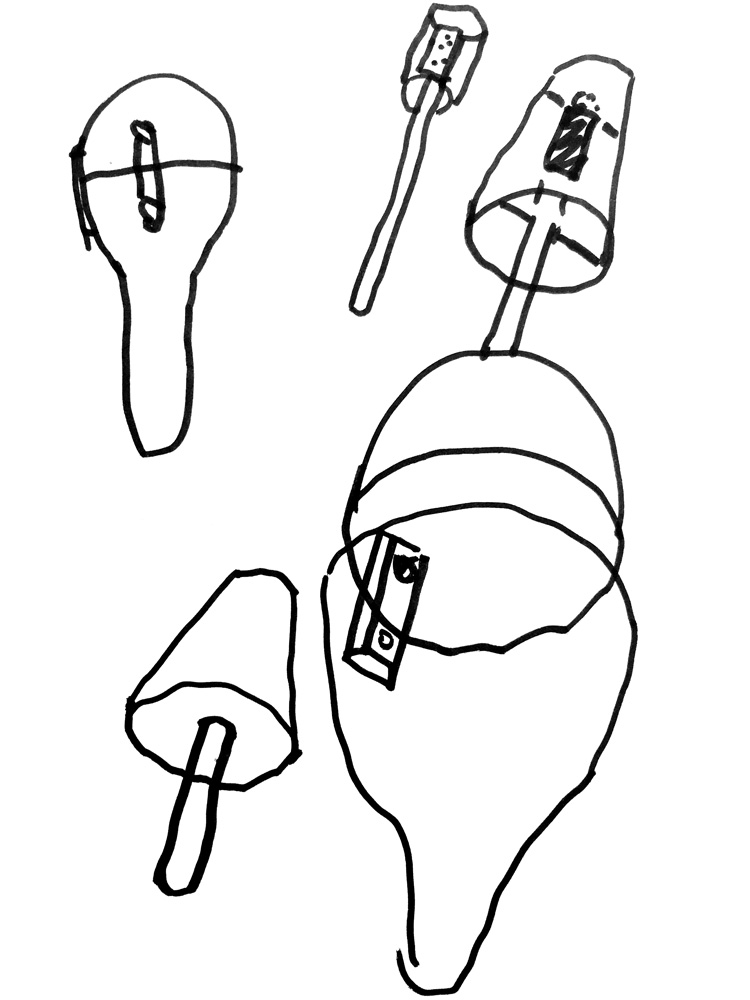
Playtesting
Apart from informal, day-to-day testing, we also carried out two documented playtests (with eight participants in total), and made efforts to incorporate what we learned into the next prototypes.
One early insight was that by letting the on-screen marks gradually fade out, we could allow the experience to be more about playing around than about making a drawing. In fact, adjusting the rate of fading turned out to be key in trying to weigh up the appeal of the visual output with the playfulness of doing something without worrying about the results.
As a side effect, the gradual disappearance added some dimensionality and depth to the drawing.
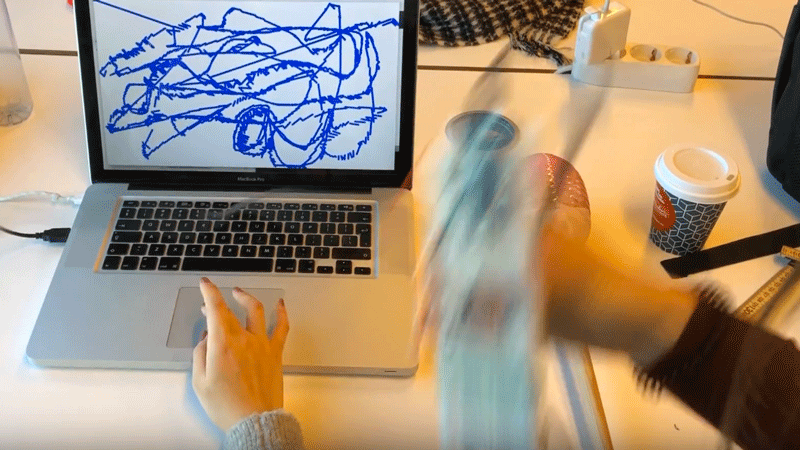
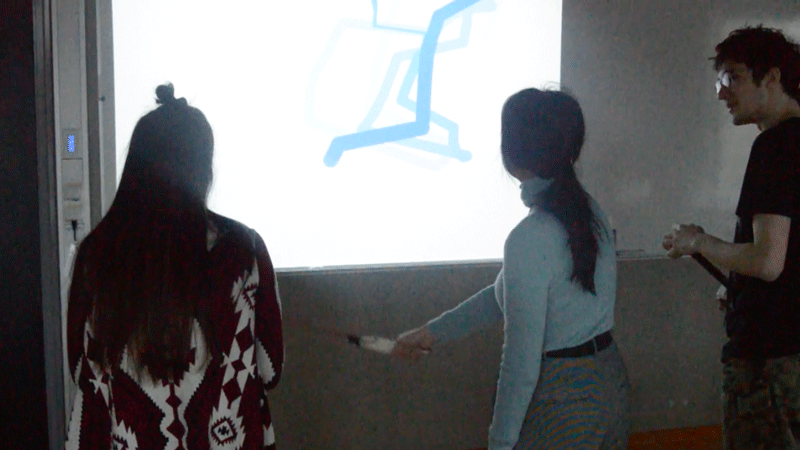
It seemed that the shared control of the pen was vital in shaping the mood of the experience – without making it predictable for that matter. Depending on the individuals playing, we could observe collaboration and coexistence, as well as conflict.
Hoping to make the visual feedback more exciting – or juicy, if you like – we went through several explorations, which helped us determine how far to push the visuals before they would start feeling disconnected from user action.
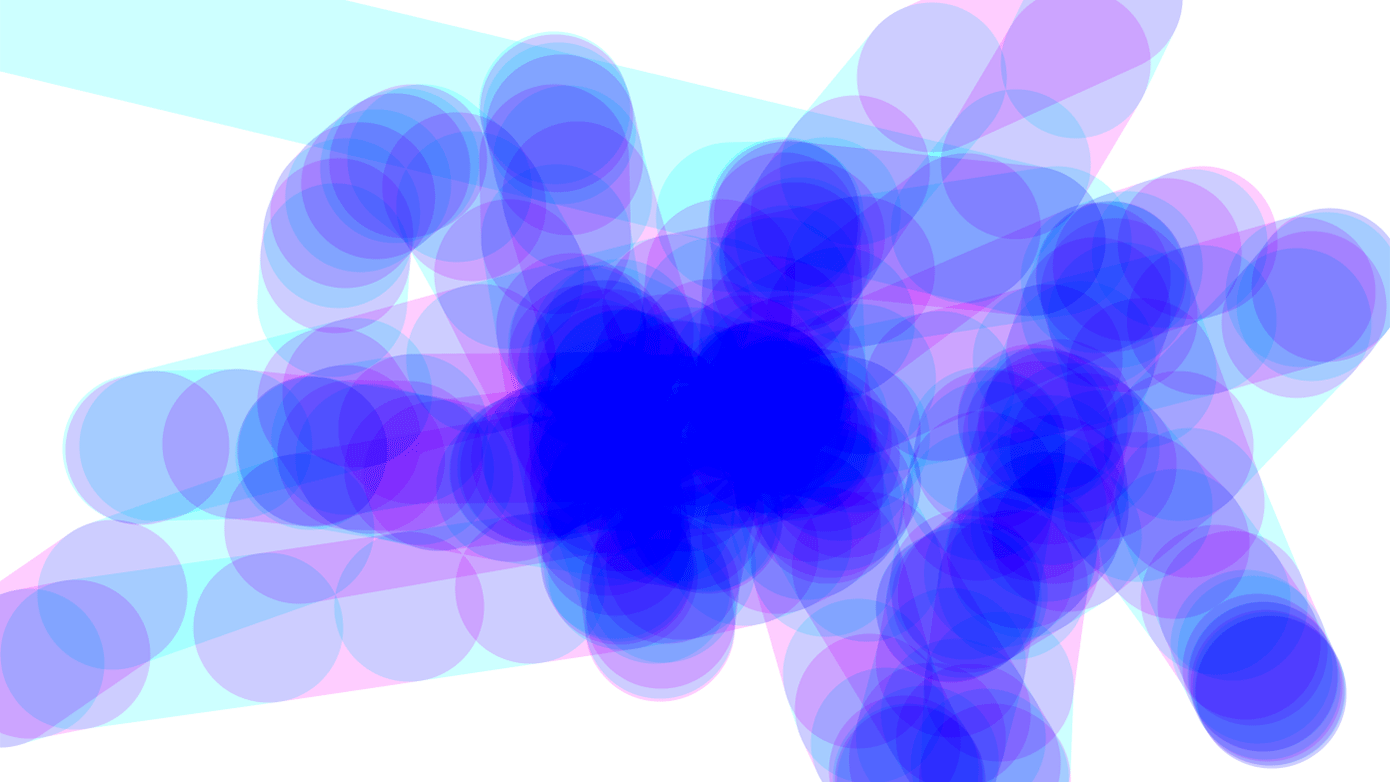

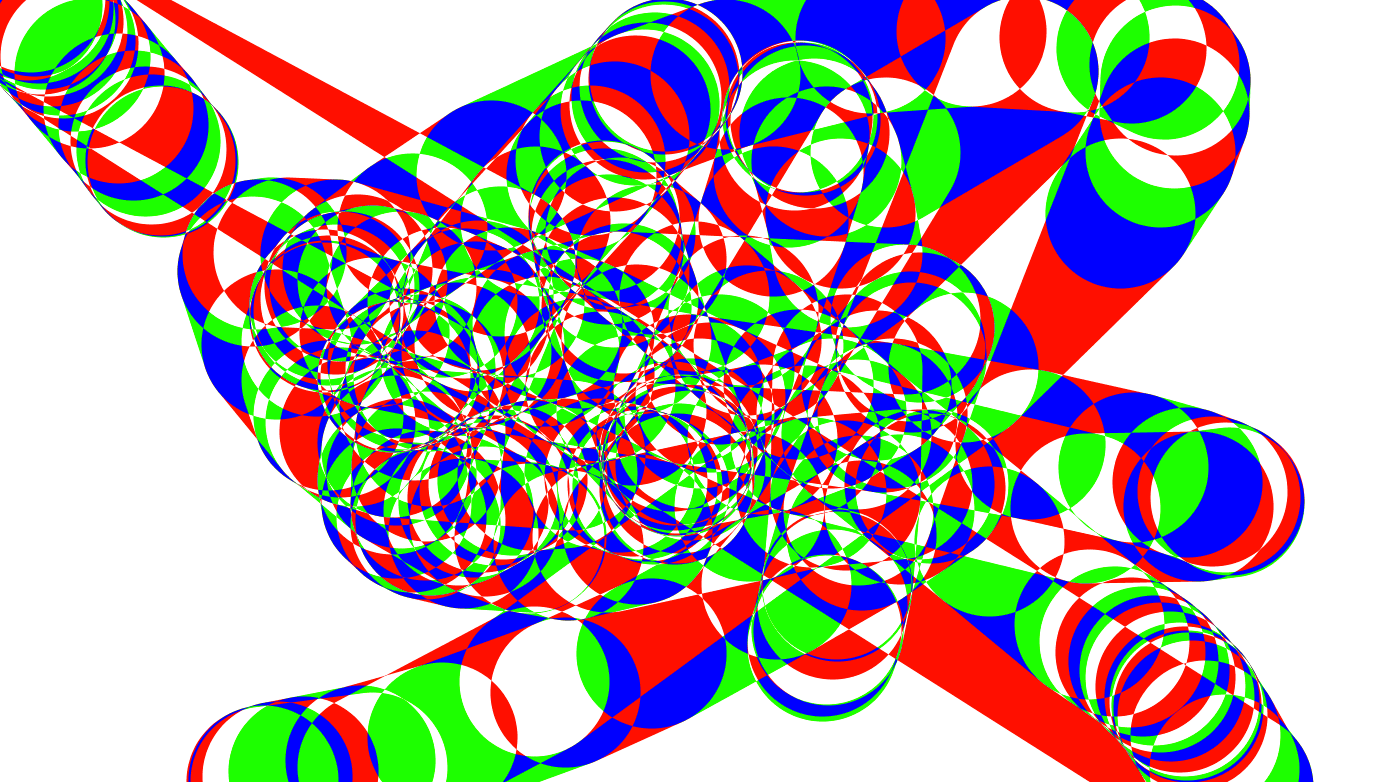
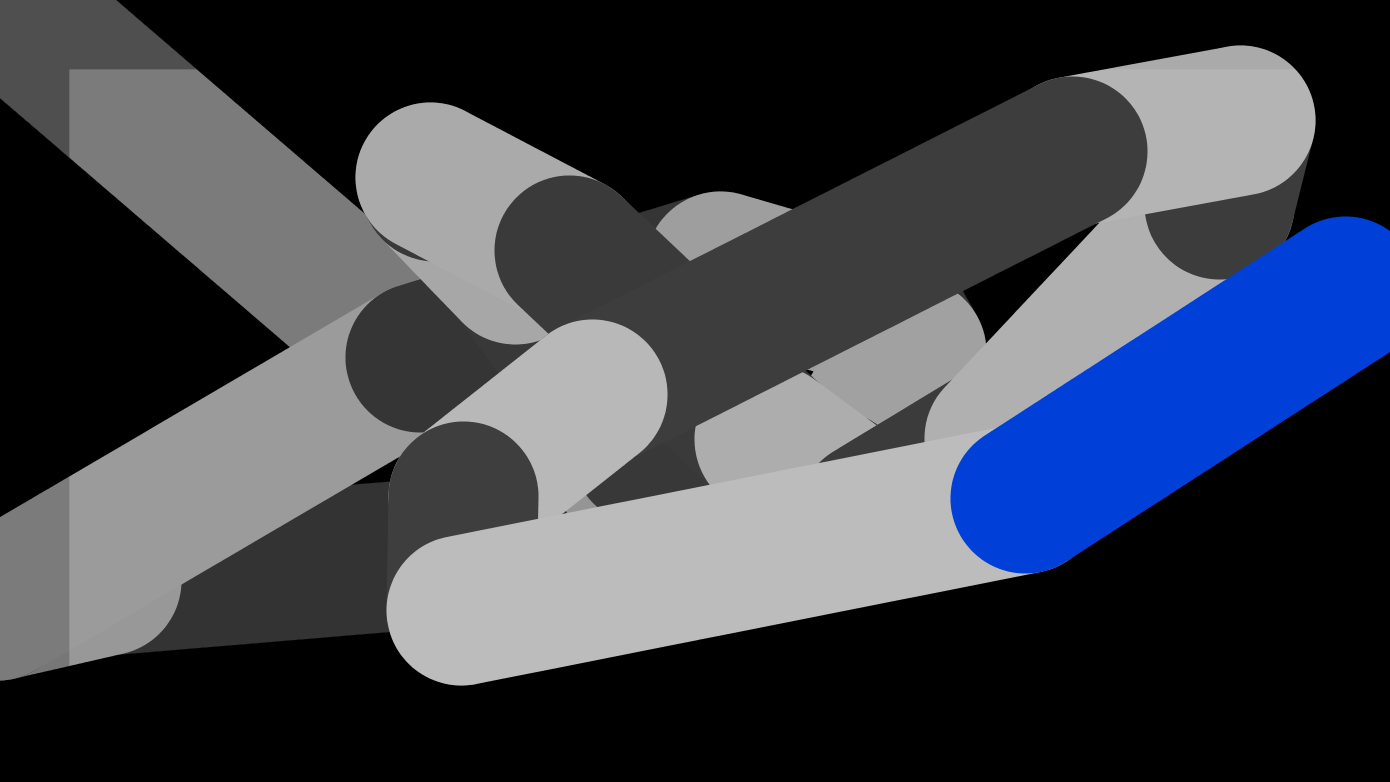
The idea of enabling different modes of play came directly from one of the participants during the playtest. We ended up with three alternatives, varying in behavior and visual style. Shaking the maraca-like device, for instance, would agitate the line or erase it, depending on the mode.
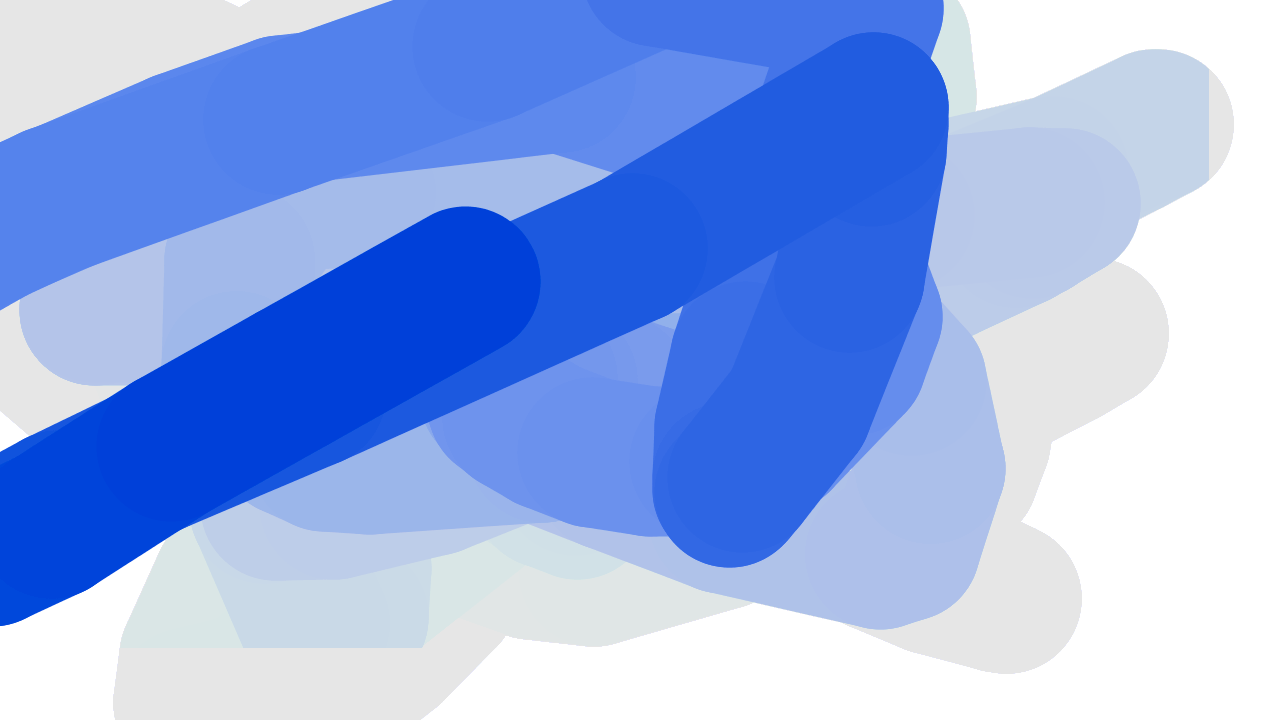
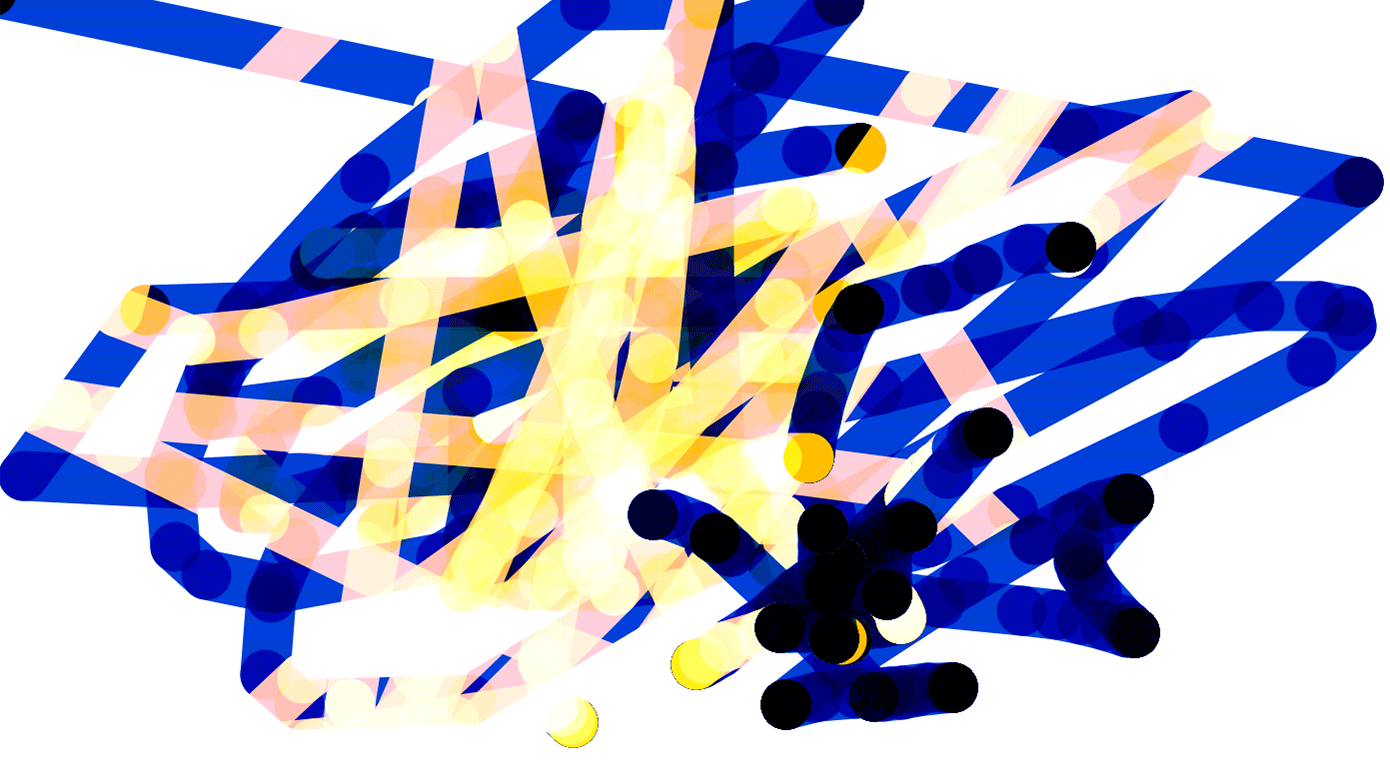
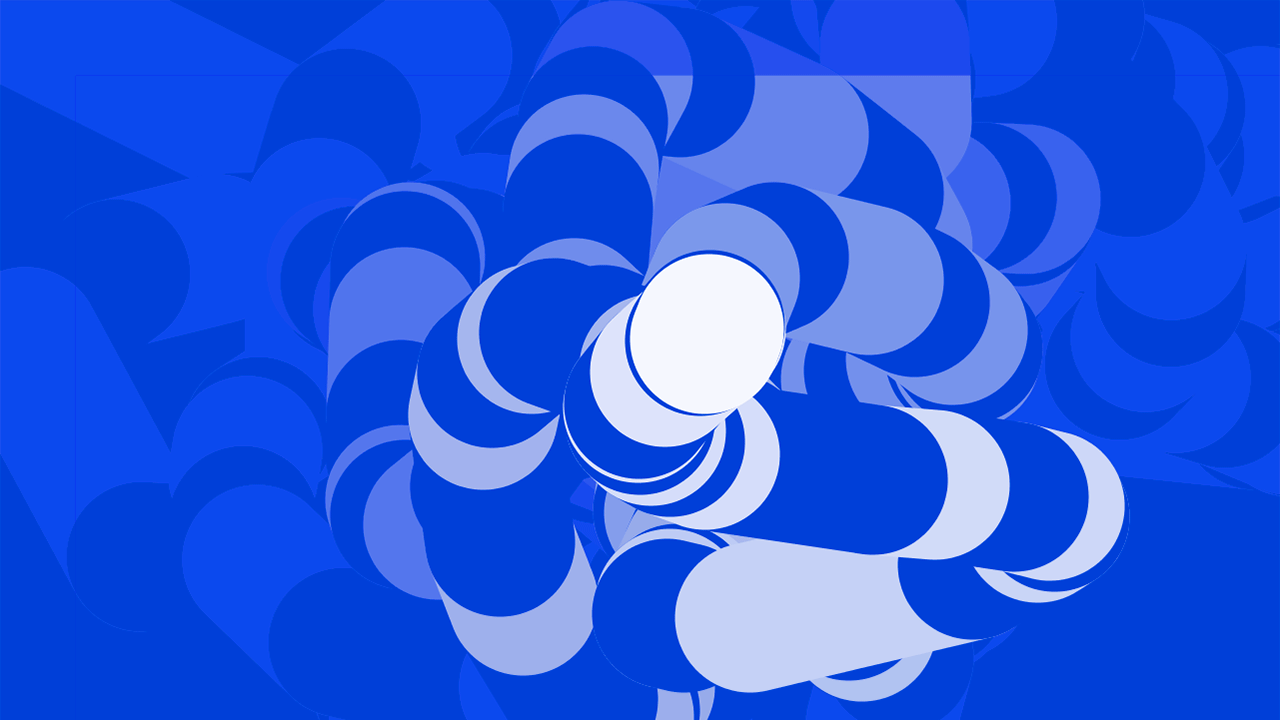
One of the three options had the color of the line constantly alternate between blue and white, which boosted the dimensional illusion. Judging by the users’ engagement, this mode was the most successful, striking some kind of balance between physical action, pen behavior, and the aesthetics of the visuals. Tellingly, it was also the mode which had moved the furthest from a conventional drawing tool.
Technical note
For our final prototype, we used three Arduino MKR WiFi 1010 microcontroller boards, two Arduino MKR IMU shields, one rotary 10 kΩ potentiometer, and three power banks. Each tool communicated with a laptop via WiFi and WebSocket technology. The programming was done in Arduino IDE and Processing.
🔥 The project was featured by @arduino.cc on Instagram